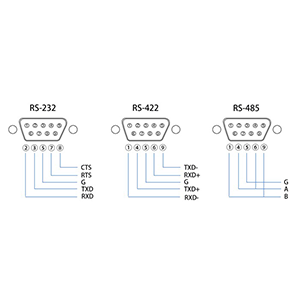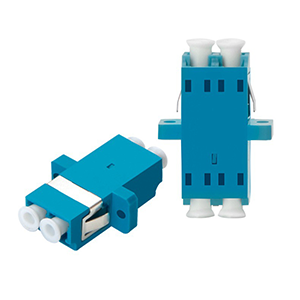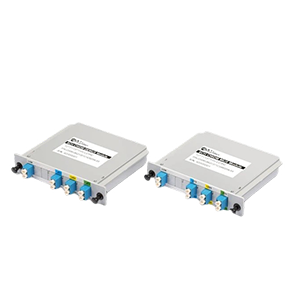Thank you for choosing to read this article. I will introduce you to the basic concepts, working principles and application advantages of Mini-GBIC (Gigabit Interface Converter) in network connection and fiber optic network expansion. Mini-GBIC is a miniaturized interface conversion module that can be used to achieve high-speed data transmission and flexible optical fiber connections between different devices.
In this article, we will explain the definition and basic principles of Mini-GBIC to help you understand how it achieves high-speed data transmission and interface conversion. At the same time, we will also explain the GBIC (Gigabit Interface Converter) standards and specifications, and introduce the characteristics of Mini-GBIC as its reduced size version.
Introduction to Mini-GBIC
Definition and rationale:
Mini-GBIC, the full name of Gigabit Interface Converter, is a small modular optical fiber transmission interface used for optical fiber interconnection between network devices. Mini-GBIC modules are commonly used in Ethernet switches, routers and other network equipment to provide high-speed, reliable fiber optic connections.
The working principle of Mini-GBIC is based on photoelectric conversion technology. It converts optical signals into electrical signals for transmission, and converts received electrical signals into optical signals for transmission again. Mini-GBIC modules usually contain an optical transceiver for sending and receiving optical signals. Lasers in optical transceivers convert electrical signals into optical signals that are transmitted through optical fibers. The optical receiver at the receiving end converts the optical signal into an electrical signal for processing.
GBIC standard:
GBIC, which stands for Gigabit Interface Converter, is a standardized optical fiber transmission interface. The design standards and specifications of GBIC modules are jointly formulated by multiple manufacturers and are widely used in network equipment. The GBIC module has a hot-swappable function, allowing modules to be replaced or added during operation, providing flexibility and scalability.
As a reduced-size version of GBIC, Mini-GBIC retains the interface and working principle compatible with GBIC, but is smaller in size. Mini-GBIC uses the same optical fiber interface and photoelectric conversion technology, but its size is more compact and suitable for devices with limited space. Due to Mini-GBIC’s reduced size, it can be used in smaller network equipment and allows for more flexible deployment of fiber connections.
Mini-GBIC modules usually support multiple fiber types, such as multi-mode fiber and single-mode fiber, to adapt to different fiber transmission needs. By replacing different types of Mini-GBIC modules, optical fiber transmission of different wavelengths and different distances can be achieved.
Application fields of Mini-GBIC
Network device connection:
Mini-GBIC has a wide range of applications in connecting between network devices, including but not limited to the following situations:
-
Ethernet switch: Mini-GBIC module can be used in the optical fiber interface slot of the Ethernet switch to achieve high-speed and reliable optical fiber connection. By inserting appropriate Mini-GBIC modules, different Ethernet devices can be connected to extend the network’s coverage and bandwidth.
-
Router: Mini-GBIC module can be used for the optical fiber interface of the router to realize optical fiber connection between routers. This is useful for network connections across longer distances or connecting LANs (Local Area Networks) located in different locations, providing high-speed, stable data transmission.
-
Server: Mini-GBIC module can be used for the fiber optic interface of the server to achieve high-speed interconnection between servers. In a data center or server architecture, by using Mini-GBIC modules, fast data sharing, backup and replication between servers can be achieved, improving system performance and reliability.
Fiber optic network expansion:
Mini-GBIC has the following applications in fiber optic network expansion:
-
Network extension: By inserting Mini-GBIC modules, long-distance optical fiber connections can be established between different devices to expand network coverage. This is useful for scenarios that require long-distance transmission, such as across buildings, campuses, or metropolitan area networks.
-
Fiber optic ring network: Mini-GBIC module can be used to build a fiber optic ring network to achieve high availability and redundant paths. By inserting Mini-GBIC modules into different devices, multiple optical fiber connections can be established to form a ring topology to ensure the reliability and fault tolerance of data transmission.
-
Network topology adjustment: The hot-swappable function of the Mini-GBIC module makes network topology adjustment more flexible. By replacing or adding Mini-GBIC modules, the network connection method and layout can be easily adjusted to meet different network needs and expansion plans.
Mini-GBIC types and interfaces
Fiber optic interface:
Mini-GBIC modules usually support multiple fiber interface types, the most common ones include the following:
-
LC (Lucent Connector) interface: The LC interface is a small fiber optic connector, available in single-mode and multi-mode versions. It features a plug-in design for easy connection and is used for high-density fiber optic connections. LC interfaces are commonly used in environments such as data centers, LANs, and WANs to provide reliable fiber optic connections.
-
SC (Subscriber Connector) interface: The SC interface is a common fiber optic connector and is available in single-mode and multi-mode versions. It adopts plug-in design and the connection is stable and reliable. SC interfaces are widely used in fields such as Ethernet, optical fiber communications and telecommunications equipment.
-
SFP (Small Form-factor Pluggable) interface: The SFP interface is a small modular interface, also known as the Mini-GBIC interface. The SFP interface can support a variety of fiber types and protocols, such as Ethernet, Fiber Channel, and SDH/SONET. It has hot-swappable function for easy replacement and upgrade. SFP interfaces are widely used in switches, routers, servers and other equipment to provide flexible fiber optic connection solutions.
These fiber optic interface types have miniaturized designs in Mini-GBIC modules, are suitable for equipment with limited space, and provide reliable fiber optic connection performance.
Electrical interface:
In addition to optical fiber interfaces, Mini-GBIC modules can also include electrical interfaces. An electrical interface refers to an interface that supports electrical signal transmission and is usually used to connect to non-fiber optic devices, such as copper cables (such as Cat5e or Cat6).
Electrical interfaces can be used in Mini-GBIC modules in some cases to provide compatibility with electrical equipment. This is useful for scenarios where fiber optic signals need to be converted into electrical signals or connected to other non-fiber optic devices.
It should be noted that the application of electrical interfaces in Mini-GBIC modules is relatively small, because Mini-GBIC is mainly designed to realize optical fiber interconnection. In most cases, Mini-GBIC modules still use optical fiber interfaces as the main choice.
Mini-GBIC performance parameters and characteristics
Transmission rate and distance:
The transmission rate and distance characteristics of the Mini-GBIC module depend on the fiber type and protocol used. Here are some common transmission rate and distance parameters:
-
Transmission rate: Mini-GBIC module can support a variety of transmission rates, including 10 Mbps, 100 Mbps, 1 Gbps (gigabits per second) and 10 Gbps (ten thousand gigabits per second), etc. Different modules support different rates, choose according to specific needs.
-
Transmission distance: The transmission distance of the Mini-GBIC module depends on the type of optical fiber used and the transmission rate. For single-mode fiber, the transmission distance can range from several kilometers to tens of kilometers. For multimode optical fiber, the transmission distance is usually shorter, generally within a few hundred meters.
Comparison with other interfaces:
Compared with other interfaces, Mini-GBIC has the following features and advantages:
-
Plugability: Mini-GBIC module has hot-swappable function and can be inserted or unplugged during operation without shutting down the device or interrupting the network connection. This makes network maintenance easier.
-
Flexibility: Mini-GBIC module provides a variety of interface types and speed options, which can adapt to different network needs and scenarios. By replacing or adding different types of Mini-GBIC modules, optical fiber connections between different devices can be achieved.
-
Scalability: Mini-GBIC module can expand the coverage and bandwidth of the network. By using Mini-GBIC modules, high-speed and reliable optical fiber connections can be established between devices to meet the needs of network expansion.
Compatibility and module selection:
The compatibility points and module selection recommendations for Mini-GBIC modules are as follows:
-
Compatibility: The compatibility of the Mini-GBIC module needs to match the device and interface type used. Make sure the Mini-GBIC module matches the fiber interface type, transmission rate and fiber type of the device to ensure compatibility and normal data transmission.
Module selection: When selecting Mini-GBIC modules, the following factors need to be considered:
- Interface type and rate: Select the appropriate Mini-GBIC module according to the device’s fiber optic interface type and the required transmission rate.
- Fiber type: Select the corresponding Mini-GBIC module according to the fiber type (single-mode or multi-mode).
- Transmission distance: Select the Mini-GBIC module that supports the corresponding distance according to the required transmission distance.
When selecting Mini-GBIC modules, it is recommended to refer to the equipment manufacturer’s specifications and recommendations to ensure compatibility and optimal performance.
Mini-GBIC installation and configuration
Hardware installation:
Below are the general steps for Mini-GBIC’s hardware installation guide:
-
Slot selection: Determine the slot location where the Mini-GBIC module is to be inserted. Typically, devices will have dedicated slots for inserting Mini-GBIC modules. These slots are usually located on the back or side of the device. Consult the device’s user manual or specifications to determine the correct slot location.
-
Turn off the device: Before plugging or removing the Mini-GBIC module, make sure the device is turned off. This avoids damage to the device or module during plugging and unplugging.
-
Physical connection: Insert the Mini-GBIC module into the selected slot. Make sure the connectors of the slot and module are aligned, and gently push the module in until the slot locks or is fully inserted. Make sure the physical connection between the slot and the module is secure.
-
Start the device: After completing the insertion of the Mini-GBIC module, start the device and wait for its startup process to complete.
NOTE: Before proceeding with hardware installation, be sure to carefully read the device’s user manual and specifications to understand the installation requirements and precautions for your specific device.
Drivers and configuration:
Normally, Mini-GBIC modules do not require separate driver installation. They should be compatible with the device’s operating system and should be automatically recognized and configured.
The following are general Mini-GBIC configuration steps:
-
Log in to the device: Use administrator rights to log in to the device’s management interface or command line interface.
-
Navigate to the interface configuration: Find and navigate to the interface configuration section related to the Mini-GBIC module. This is usually in a section such as Network Settings, Interface Settings, or Module Management.
-
Activate interface: Confirm that the Mini-GBIC module has been recognized, and activate or enable the corresponding interface. This may involve checking or enabling relevant options in the admin interface.
-
Configuration parameters: Configure the parameters of the Mini-GBIC module as needed, such as rate, transmission mode, etc. These parameters can be adjusted based on specific network requirements.
-
Save and apply the configuration: After completing the configuration, make sure to save and apply the changes. This will ensure that the configuration takes effect and is applied to the Mini-GBIC module.
Note that specific driver installation and configuration steps may vary depending on the device and operating system. Please refer to your device’s user manual and manufacturer-provided documentation for precise guidance on your specific device and operating system.
Mini-GBIC’s advantages and application cases
Flexibility and scalability:
Mini-GBIC modules provide the advantages of flexibility and scalability, making them suitable for different network needs. Here are some advantages of Mini-GBIC:
-
Interface flexibility: Mini-GBIC module supports multiple interface types and rate options, such as Ethernet, Fiber Channel, etc. This allows the Mini-GBIC module to adapt to the interface requirements of different devices and networks, providing greater flexibility.
-
Long-distance transmission: Mini-GBIC module supports different transmission distances and can cover a range from a few hundred meters to dozens of kilometers. This makes the Mini-GBIC module advantageous in scenarios that require long-distance transmission, such as campus networks, data centers, etc.
-
Scalability: By using Mini-GBIC modules, high-speed and reliable optical fiber connections can be established between devices to meet the needs of network expansion. The pluggability of Mini-GBIC modules makes expansion and upgrades easier and more flexible.
Network upgrades and upgrades:
Mini-GBIC modules have a wide range of applications in network upgrades and upgrades. The following are some actual cases and experience sharing:
-
Rate upgrade: By replacing the Mini-GBIC module, the network can be upgraded from a low rate to a higher rate. For example, upgrade from 100 Mbps to 1 Gbps or from 1 Gbps to 10 Gbps. This upgrade can provide greater bandwidth and higher performance to accommodate growing network demands.
-
Optical fiber upgrade: When the existing optical fiber cannot meet the transmission distance requirements, the Mini-GBIC module can be used to upgrade the network to a fiber type that supports longer distances. For example, upgrading from multimode fiber to single-mode fiber for longer transmission distances and higher performance.
-
Network topology adjustment: The network topology can be easily adjusted using the Mini-GBIC module. By adding or replacing Mini-GBIC modules, new fiber connections can be established or existing equipment reconnected to meet changes in network layout and needs.
-
Equipment migration and replacement: When equipment needs to be replaced or migrated, the Mini-GBIC module can provide convenience. Simply unplug the Mini-GBIC module from the old device and plug it into the new device to quickly restore the fiber connection, reducing network outage time and maintenance costs.
The flexibility and scalability of Mini-GBIC modules enablethis makes it ideal for network upgrades and upgrades. By selecting appropriate Mini-GBIC modules, configuring and adjusting them according to network needs, changing network requirements can be met and provide higher performance and reliability.
Please note that specific network upgrades and upgrade options may vary based on network size, device type, and vendor. Before proceeding with network upgrades and upgrades, it is recommended to refer to the equipment manufacturer’s recommendations and specifications, and seek help and guidance from professional network engineers when needed.
Summarize:
By reading this article, you will have a deeper understanding of the basic concepts, working principles, and application advantages of Mini-GBIC in network connections and fiber optic network expansion. As a miniaturized interface conversion module, Mini-GBIC provides a reliable solution for high-speed data transmission and flexible optical fiber connections between different devices.
Understanding the different types and interfaces of Mini-GBIC, as well as their performance parameters and installation configuration points, will help you correctly select and configure the equipment that suits your network needs. Mini-GBIC’s flexibility, scalability and wide range of application cases make it an ideal choice for network upgrades and expansions.
We look forward to exploring the advantages and innovations of Mini-GBIC with you and providing high-speed, reliable solutions for your network connections. Whether in network equipment such as switches, routers or servers, Mini-GBIC will provide you with excellent performance and flexible fiber optic connection experience.




